Stone disc in Italy reveals mystery of star missing from the sky
- Published
- comments
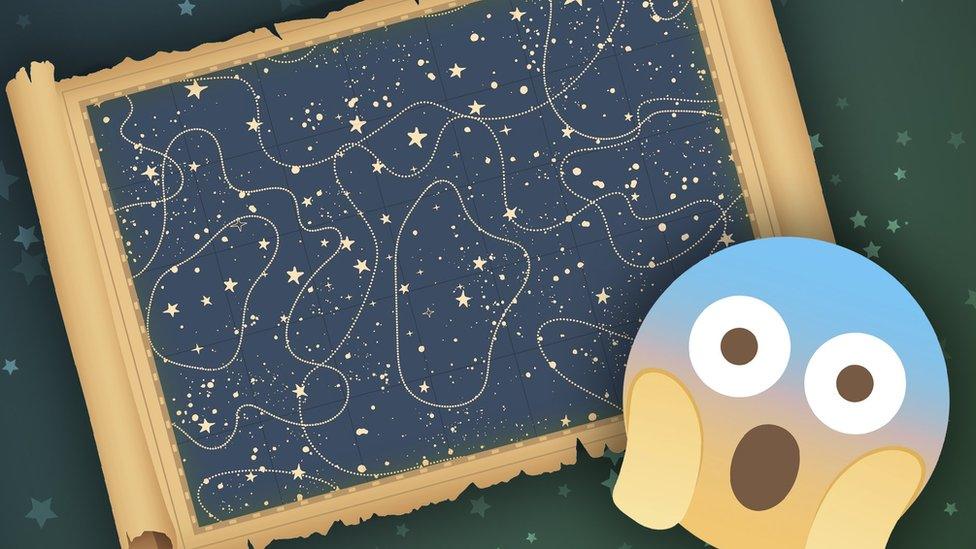
Astronomers have discovered a stone disc they believe might be one of the oldest maps of the night sky.
It was found in Italy and is believed to be around 3,000 years old.
Researchers from the Italian National Institute for Astrophysics (INAF) used software to analyse 29 marks on the stone.
They believe most of the marks match famous constellations of the sky's brightest stars like Orion, Scorpius and Cassiopeia.

Archaeologist Federico Bernardini and astronomer Paolo Molaro with the disc
How was the star map stone found?
The stone was discovered in an old hill fort in north east Italy, near a second similar blank stone that researchers believe might have been a representation of the sun.
A study of the marked disc found that 28 of the 29 marks on the stone appeared to match the position of 28 stars in the sky.
But there was no obvious connection for the 29th mark - and the researchers have said this might be a star that has turned into a supernova or a black hole and is no longer visible to us today.
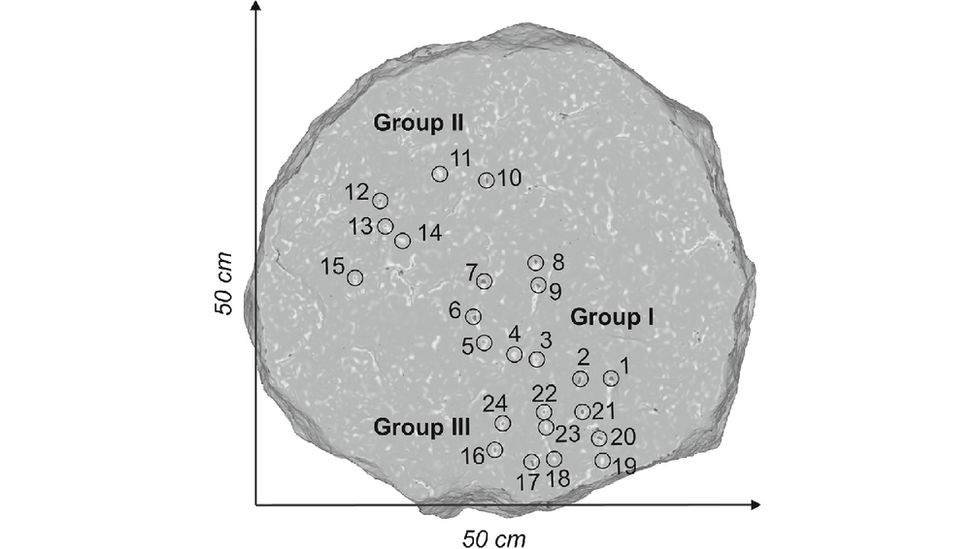
A diagram shows the position of the 24 marks on one side of the stone, although five other marks were found on the other side
"The unidentified mark challenges the whole picture," study authors Ferico Bernardini and Paolo Molaro wrote.
"The case of a failed supernova is really intriguing as one of the techniques to search for them is precisely to look for missing stars in the current sky, by using images taken at previous times."
The study suggests the stone was used to help track the seasons throughout the year.
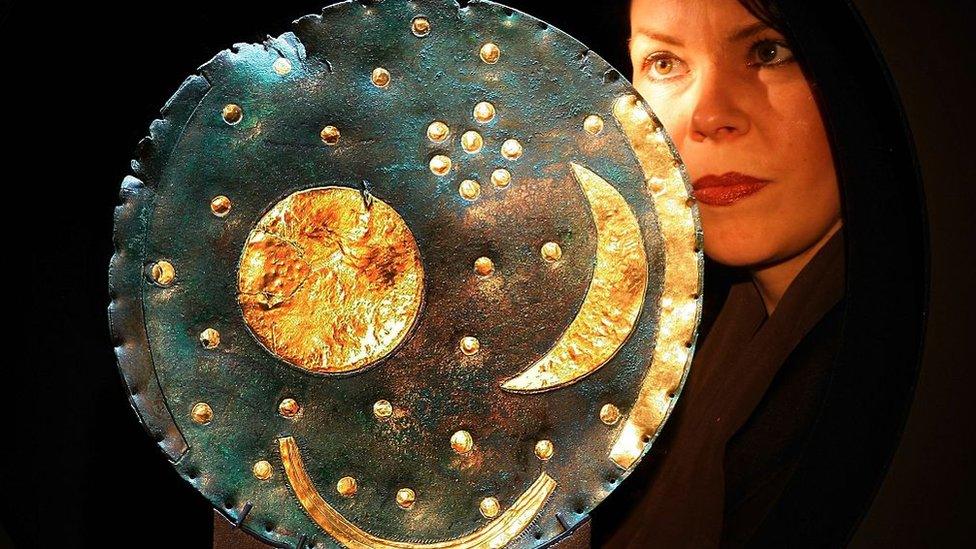
The oldest depiction of the night's sky is the Nebra Sky Disc, which is thought to be 3,600 years old
But, astronomer Ed Krupp has his doubts as to whether this stone disc is truly a map of the night sky.
Speaking to the science magazine Live Science, he said: "Could these marks represent asterisms? They could."
An asterism is a pattern of stars that is not a constellation.
Mr Krupp said he did not believe the researchers at INAF had proven beyond doubt the stone disc represented constellations, adding: "Does the paper argue a persuasive case? No, it doesn't."
What do you think of the stone disc? Let us know in the comments.
- Published8 June 2023
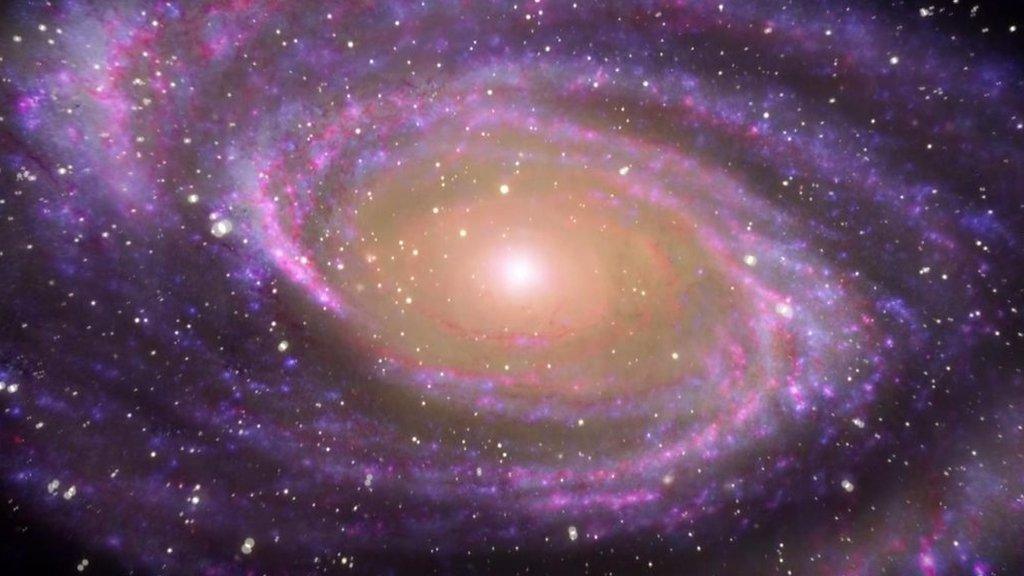
- Published24 December 2023
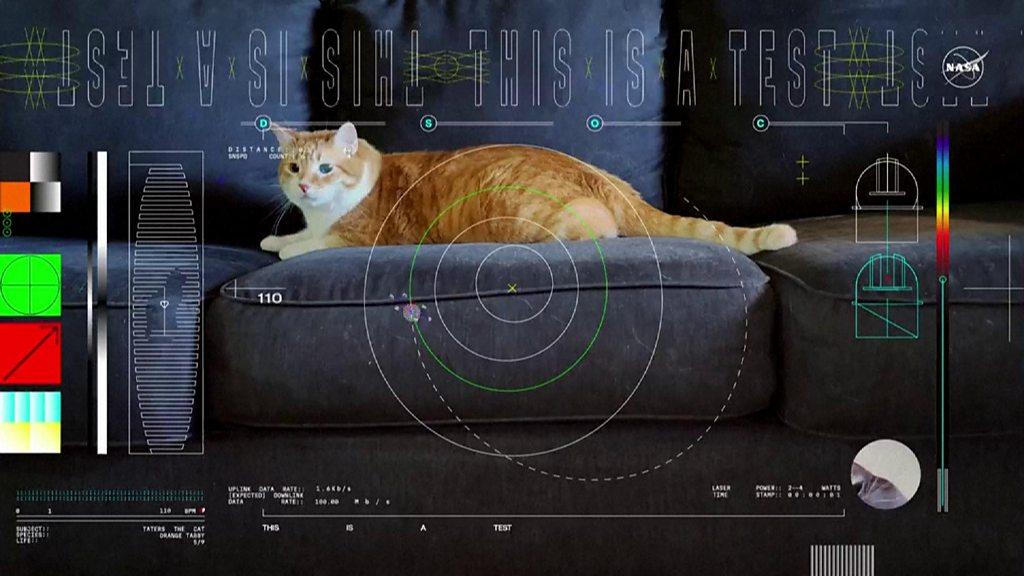
- Published9 January 2024

